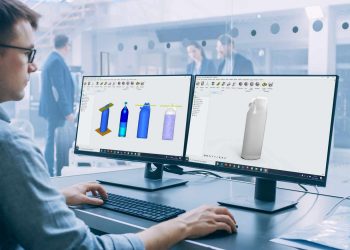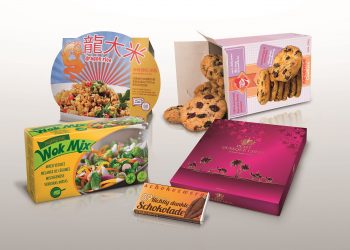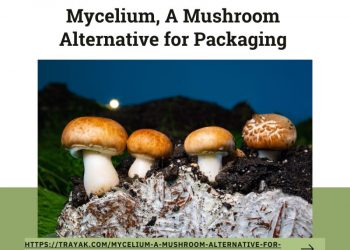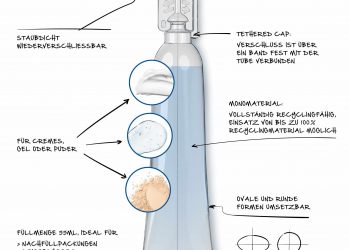Bread, is generally understood as a baked food product made of flour that is moistened, kneaded and sometimes fermented. It has been a major food for mankind since prehistoric times. It has been made in various forms using a variety of ingredients and methods throughout the world. The first bread perhaps was made in Neolithic times, nearly 12,000 years ago, probably of coarsely crushed grain mixed with water, with the resulting dough probably laid on heated stones and baked by covering with hot ashes. The Egyptians apparently discovered that allowing wheat dough’s to ferment, thus forming gases, produced a light, expanded loaf, and they also developed baking ovens.
The bulk of the bakery products are marketed fresh at both wholesale & retails levels but some including many of cooked and uncooked pies, pizzas, waffles, cream or fruit-filled cakes are marketed frozen in European markets.
Most fresh baked products have only few days shelf life at ambient temperature. Moulds are the most common type of spoilage organism to be associated with baked products. Water activity and storage temperature have been shown to be the 2 most important factors governing mould free shelf life of cakes. The lower is the water activity and storage temperature the longer is the shelf life of the product.
Preservatives such as sorbets also inhibit mould growth. In India table bread has usually a shelf life or around 4 to 5 days and is usually packed in polyethylene & polypropylene bags which are twist tied.
This article attempts to evaluate different packaging materials, coatings & systems used for packaging of bread & bakery items.
Paper based materials in Bakery industries
1) Baking trays
2) Cake boxes
3) Bake oven paper
4) Grease proof paper
5) Grease proof slip easy paper
6) TDL poster paper
1) Baking trays
Baking trays are an efficient way to present, protect and cook food products including breads and cakes. Paper based baking trays are an environmentally friendly alternative to plastic or foil trays. Made from corrugated, solid board or folding carton, baking trays are made from a renewable resource and can be recycled depending upon liners selected. Suitable for direct food contact, the trays are heat resistant and can be used safely in ovens. This provides maximum convenience for consumers who are able to cook the product in its packaging.

Baking trays are available in a variety of shapes, sizes and colours and are suitable for both automated and manual packaging lines.
2) Cake boxes
Cake boxes provide protection for cakes and other bakery goods whilst in transit from the bakery to the consumer. Solid board and folding carton cake boxes are typically used in bakeries and available in one and two piece designs. An interesting innovative cake box is called ‘Torten Boy’ consisting of a tray and lid. This box can be opened from two sides allowing the cake to be removed horizontally rather than upwards. This avoids any difficulty removing the cake from the box and ensures there is no damage. Other commonly used boxes are 4 / 6 corner boxes for easy erection. Corrugated cakes boxes are also available for large premium cakes that require maximum protection. All cake boxes can be custom printed with your logo, brand or decorative designs to ensure premium presentation of the product.

Features: Such as window patching can be included, offering consumers excellent visibility of the product.
3) Bake oven paper
Bake oven paper is used as a tray liner for flat baking application. This paper withstands multiple baking. It has high resistance to heat.

Variants: 40-45 GSM. Available in different colors.
Features: Paper has high density, stability, and heat resistance properties. Suitable for conventional baking application and micro waves. Sustains the temperature up to 230°C. Can be reused up to 4 times for multiple baking.
End use: Multiple baking applications as a tray liner for cakes and confectioneries, Pizza’s etc. This paper eliminates the greasing of tin and trays allowing very rapid turn-around of batches of baked goods. It eliminates utensils cleaning time.
4) Greaseproof paper
Greaseproof paper is made under hygienic condition from pure wood pulp which gives excellent grease resistance and oil hold out properties. Paper prevents penetration of oil & fats thus retain the original flavor and taste intact. No negative effect on original quality of food since paper has good breathability. Greaseproof paper is suitable to withstand wide range of environments, from hot oven to deep freezer & humidity.

Variants: 40-60 GSM.
Features: Excellent grease resistance and oil hold out properties, Machine friendly for printing and converting, High strength & Stability. Withstand in Oven & freezer.
End Use: Fast food items packaging like Burger, French fries, Snack Rolls, & other oily food products rapping of meat, fish and cottage cheese.
5) Greaseproof slip easy paper
Greaseproof slip easy paper is specially designed for conversion to molded cups. Main requirements of paper are good grease/ fat resistance, oil holdout and easy cup to cup release (denesting) during continues product in bakery process.

Variants: 30-70 GSM. Available in colors (Natural shade, brown, pink etc). Available in Transparent and Opaque properties.
Features: Machine finished paper. Excellent grease resistance and oil hold out properties. Easy cup to cup release.
End Use: Baking of Cup cakes and Muffins etc. Packing of Sweets, mithai etc.
6) TDL (Titanium Dioxide Loaded ) Poster Paper
TDL poster paper used for various packaging applications is manufactured from premium quality pulp with addition of pacifying agent like Titanium di-oxide. The paper offers good printing quality, high opacity. The TiO2 maintains good opacity when the paper is wax coated for packaging application. Typical uses are packaging of Burger and fries.
Variants: 26 -40 GSM
Features: Paper provides excellent Brightness and uniform smoothness to surface. Good Print ability. It is machine finished. Gives good opacity after wax coating.
End use: Specially used in wrapping Burgers, Pizza & other fast food items.
Barrier Coatings
1) Oil & Grease Barrier Coatings
2) Moisture Vapour Barrier
1) Oil & Grease Barrier Coatings
a) The Kit Test (Tappi T559)
The Kit test measures the degree of repellence or anti-wicking of paper and boards which have been treated with fluoro chemical and other sizing agents used to prevent wetting of the cellulose fibers of the material. Test solutions with varying strengths of castor oil, toluene, heptane and turpentine are used. The highest numbered solution (the most aggressive) that remains on the surface of the paper without causing failure is reported as the “kit rating” (maximum 12). The Kit test is used to quantify or compare the performance of papers and boards, used for food contact and other packaging applications where resistance to grease staining is important. Smithers Pira testing is performed to the Tappi standard T559.
b) Turpentine Test (Tappi T454)
Silica sand is placed on the paper and dyed turpentine added to saturate the sand. The time taken for the dye to penetrate the paper is determined. This test is usually applied to greaseproof, glassine, vegetable parchment. It is not always suitable for assessing papers and boards that are given grease or oil resistance by means of a coating or internal treatment. Smithers Pira testing is performed to the Tappi standard T454 and MOD Def standard 81-93/2 Annex A.
Oil & Grease Barrier Coatings: Ready-to-use, water-based coating solutions impart functional barrier against ingress of oil & grease for fiber-based packaging. Range of Oil & Grease Resistance (OGR) coatings include highly versatile coatings that provide additional features like water barrier and release properties, to economical coatings that provide the just-optimum solution.
Application Areas: End application area of our oil and grease barrier coatings include: Bakery fast food, Dry food.
Performance: Coatings provide KIT values of 12 to 16 in case of application with Metered Size Press, Blade & Rod Coaters, or Flexo printers. These coatings allow for a cost-effective alternative to traditional barrier solutions like PE lamination, wax coatings or fluoro chemicals. Coating solutions can be customized to meet specific performance requirements.
c) Permeability Test (ISO 16532-1)
The grease resistance of both creased and increased paper and board is determined as the time taken for a simulated “fat material” (palm kernel oil) to penetrate the board coating. This test method has the advantage that it is equally applicable to paper and board that has been internally or surface sized with organ phobic materials, or plastic coated. Smithers Pira testing is performed to BS ISO 16532-1.
2) Moisture Vapour Barrier
Ready-to-use, water-based coating solutions that impart functional barrier against ingress of moisture vapor for fiber-based packaging.
Application Areas: Bakery Fast food, Frozen food & chilled food, Dry food Consumer goods, Reel & Ream Wrap.
Performance: It is possible to reduce Moisture Vapor Transmission Rate to 10 to 40 g/m²/day in jungle conditions (38°C & 90% humidity) at coat weights similar to polyethylene extruded film. Coatings are formulated to provide the optimal performance as demanded by a given application. These coatings allow for a cost-effective alternative to traditional PE lamination.
Features: Glue able with both hot melt and cold set adhesives. Can combine properties of release & grease barrier as required. Heat sealable if required. FDA/BFR compliant for food contact Repulpable. Can be adapted for varied grades of fibre-based substrates – carton, corrugated or flexible paper. Can be applied using conventional coating techniques (Blade, rod, size press), or flexo & rotogravure. Easy to handle & safe to apply.
Films & Laminates for Bakery products
There is a wide range of laminates and bottom webs to protect and extend the shelf life of bakery products.
On-shelf differentiation: Wide range of film specifications. Visual effects such as appealing ‘high gloss’ effect printing in up to 10 colours. Product differentiation and brand image reinforcement through innovation in all processes.
High Barrier Films: Ceramic silicon oxide coated films combine optical clarity with excellent barrier properties. They serve as the barrier layer in liding and pouch laminates as well as other high tech products.
Manufacturing Process: Ceramic coating is a technology by which a SiOx coating is applied to various types of substrates. The Ceramic coating is a thin inorganic layer of silicon oxide that has been evaporated in a high vacuum environment to substrates like PET, oPA and oPP. The solid silicon oxide is heated by an electron beam and sublimates. Then the vapor condensates and forms a very thin barrier layer on the film that is conveyed on a cooling roll.
Modified Atmospheric Packaging Systems
Keeping it fresh for a longer life
Products are generally frozen to achieve a longer shelf life, especially for distant markets. With the increased use of microwave ovens, even more baked products may appear in the frozen food section of the retail food store.
More effective methods for control of mould growth are needed. A promising development to achieve this is MAP using a mixture of CO2 and N2 in the gas atmosphere.
Changes on crumpets packaged in different gas atmosphere during storage at 25°C.

Modified Atmosphere Packaging of Bread products
> Typical products that benefit from MAP are tortilla wraps, baguette, bagels, pita, naan bread and other types of bread.
> These products have relatively low water content, the type of microbes that can cause spoilage are mainly moulds, as bacteria prefer more water.
> These moulds are aerobic – they need oxygen from the air for their growth.
> Excluding oxygen and using a high proportion of carbon dioxide – up to 100% – is a highly effective way of significantly increasing the shelf life of these bread products.
> A big advantage of using very high CO2 as the modified atmosphere is that it makes the packaging relatively easy to test or leaks. Leak detection systems for carbon dioxide are well developed and can be configured to work automatically during the packaging process.
> The integrity of the packaging materials is especially important for bread products, as any leakage can cause oxygen to enter which could rapidly result in the growth of mould, and also cause the product to dry out and become stale.
> Typically a pre-baked bread product packaged in an atmosphere exclusively of carbon dioxide would see an increase in shelf life from around five days to 20 days when stored at room temperature.
> Some products can retain a shelf life of up to six months if packaged in an appropriate atmosphere and with correct packaging materials. Packaging bread products in this way means that the products do not need to be frozen, which makes it easier and cheaper for them to be stored, transported and distributed.
> Other bakery products are amenable to MAP, although there are other considerations. For products that have icing, for example, too much carbon dioxide can cause the appearance to deteriorate. In such cases a certain amount of nitrogen in the mixture solves the problem.

Improve Shelf life & Quality: With typical packaging, shelf life is usually less than 14 days at best. But with MAP you can extend shelf life by 40* plus days. Bakery goods will look and taste fresher. This packaging technology reduces shrink by keeping oxygen out and retarding mold growth.
Expand Distribution: Another benefit of extended shelf life is that you can increase geographic market potential. Suddenly new retailers can become prospects for your baked goods. Also, with MAP you can ship at ambient temperatures, giving you even more flexibility to attract new customers.
> Protect high-quality bakery items
> Ideal for preservative free, whole grains, gluten-free, specialty and organic
> Premium ingredients have a premium cost – and advanced packaging is the best way to protect your investment
> This packaging helps prevent cross contamination with gluten-containing products in the distribution cycle. Move items out of the freezer
> MAP lets you move these products out of the freezer, especially gluten-free products where texture and package crumb change within days
> Low oxygen environment retards mold growth
> Protects product during shipment
> Eliminates expenses for freezers during distribution “Fresh baked” experience adds value

> Fresher appearance and taste when initially opened
> Volatile compounds are retained within the to enhance fresh product experience when opening
> Looks higher-quality on shelf
Oxygen Scavengers- How Active Barriers extend shelf life
Film Cross Section: The oxygen-absorbing barrier uses breakthrough technology that is invisible to consumers. Scavenging components provide a higher level of protection from oxygen compared to standard barrier materials that only contain a passive barrier.

Sustainability
All packaging for bakery products must aim towards increasing sustainability in application. It is most often defined as meeting the needs of the present without compromising the ability of future generations to meet theirs. There are three main pillars: economic, environmental and social. These three pillars are informally referred to as people, planet and profits.
Late Mr. P. Dasgupta was a Packaging Consultant located at Bangalore, India. He had a total packaging development experience of around 39 years.
In his last assigment, he was Head Packaging (Foods) South Asia for Unilever India. He retired from Unilever in 2012.






